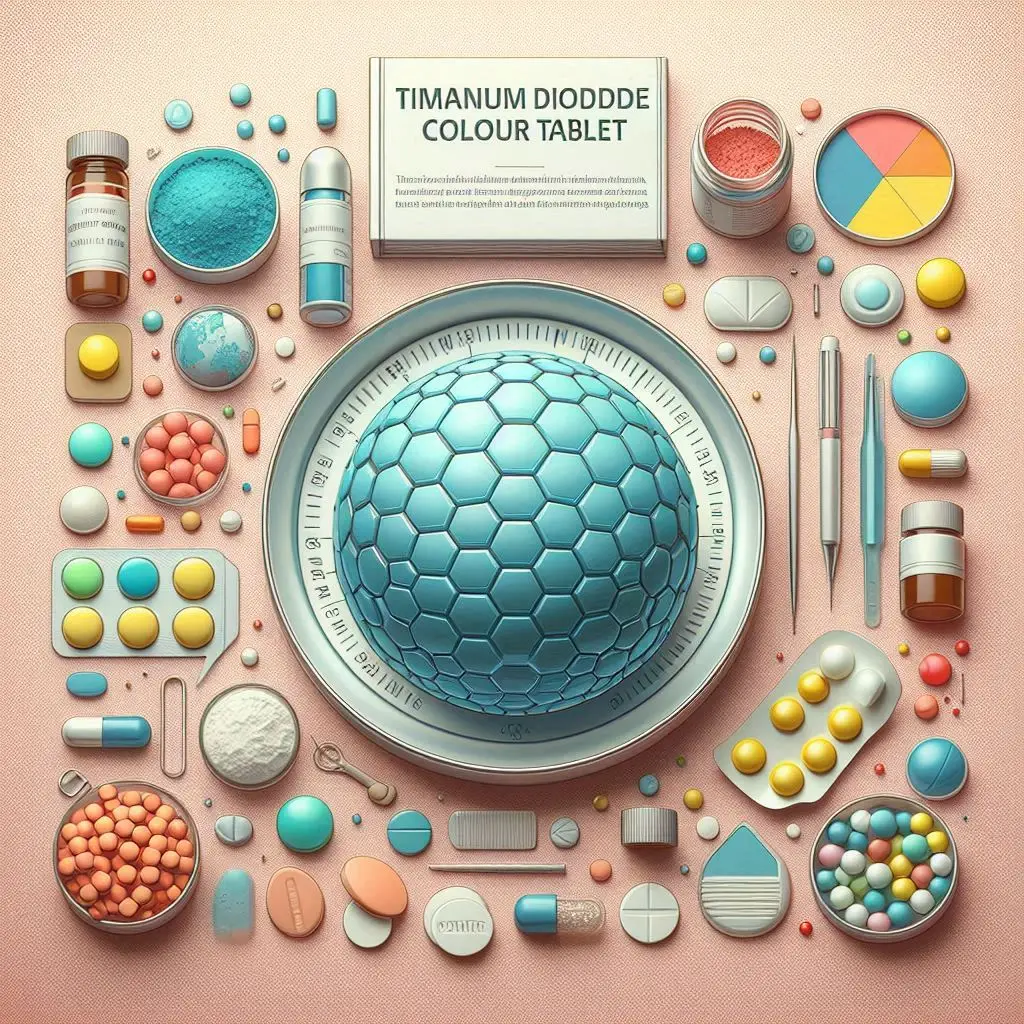
Titanium dioxide colour tablet
This article, titanium dioxide colour tablet, explores the characteristics of titanium dioxide, how it's used in color tablets, and the environmental effects of using it.
Color tablets containing titanium dioxide are essential for improving the appearance and distinguishability of medicinal and cosmetic items. The compound is the best option for these uses because of its special qualities. But there are legitimate worries about how titanium dioxide affects the environment, which calls for more study and the implementation of sustainable methods. For titanium dioxide to be used responsibly in the production of color tablets, it is essential to strike a balance between its advantages and the environment.
Beyond their aesthetic value, titanium dioxide color tablets have many more uses in medicine and cosmetics. New opportunities for this substance are being unlocked by ongoing research and improvements, ranging from groundbreaking developments in nanotechnology to environmentally friendly sourcing methods. The appropriate and creative use of titanium dioxide is crucial for the compound's continuous growth in a variety of applications, even as companies overcome regulatory hurdles and environmental concerns. How technology advances and environmental protection are balanced will determine titanium dioxide's place in the world market in the future.
There is a growing interest in titanium dioxide for developing technologies, beyond its conventional uses. Within the field of nanotechnology, scientists are investigating the potential applications of titanium dioxide nanoparticles, such as imaging agents and medication delivery systems. These nanoparticles have the potential to completely change medical diagnosis and therapy due to their distinct physicochemical characteristics.
Because titanium dioxide is biocompatible and inert, it is a desirable drug delivery alternative in the pharmaceutical industry. medication encapsulation in titanium dioxide nanoparticles is being studied by researchers as a way to enhance medication solubility, stability, and targeted delivery. This has the potential to minimize negative effects while increasing the effectiveness of medicinal formulations.
Furthermore, titanium dioxide nanoparticles are becoming increasingly popular in cosmetic formulas due to their ability to scatter light, which helps to create a skin tone that is smoother and more uniform. These developments highlight titanium dioxide's flexibility as a functional constituent with a wide range of uses, in addition to its use as a colorant.
Difficulties and the Legal Environment:
Titanium dioxide is used widely, however there are still issues with it, especially with regulations. The safety of titanium dioxide nanoparticles has drawn scrutiny from regulatory agencies, who have decided to review their policies. Comprehensive safety studies are now required due to limits placed by some countries on the use of nanoparticles in certain goods.
To tackle these obstacles, research organizations, regulatory agencies, and industry sectors must work together to provide precise recommendations for the usage of titanium dioxide, particularly in the form of nanoparticles. Extensive research and strict testing procedures are necessary to guarantee consumer and environmental safety.
Prospects & Innovations for the Future:
In the future, efforts will be made to solve the environmental issues related to titanium dioxide via study and innovation. The investigation of sustainable titanium sources, such as the use of titanium from ilmenite or other environmentally friendly extraction techniques, is one noteworthy achievement. Furthermore, the environmental impact of producing titanium dioxide might be greatly decreased by the development of more energy-efficient manufacturing techniques.
Transparency and environmentally friendly procedures are becoming more and more popular in the pharmaceutical and cosmetic sectors. Businesses are embracing waste reduction, sustainable sourcing, and investigating more eco-friendly formulas. This change is in line with customer desires for goods that uphold ethical and ecological norms in addition to meeting high quality requirements.
Titanium dioxide, or TiO2, is a chemical with several applications in the food, cosmetics, and pharmaceutical sectors. Color tablets are one interesting application where TiO2 is used to create a bright white color.
Titanium dioxide is a naturally occurring oxide of titanium that has special qualities that make it useful in a variety of applications. It is widely used in pigments, coatings, and sunscreen because to its remarkable whiteness, high refractive index, and UV-blocking properties.
Applications for Color Tablets:
In the pharmaceutical and cosmetic industries, where product identity and aesthetics are vital, color tablets are indispensable. As a white pigment, titanium dioxide is a great starting point for making colorful and eye-catching tablets. Its non-toxic qualities make it even more appropriate for use in consumable goods.
Manufacturing Process: The active components and pigment are carefully formulated and blended throughout the creation of titanium dioxide color tablets. After that, the tablets are crushed using specialist equipment. Precise control of titanium dioxide dose is necessary to get the intended color and ensure product safety.
Titanium dioxide's benefits in color tablets:
Whiteness: Titanium dioxide gives tablets a brilliant, clean white tint that improves their aesthetic appeal.
Stability: Because of the compound's chemical stability, the color of the tablet will not change over its shelf life.
Biocompatibility: Titanium dioxide is deemed safe for ingestion, which qualifies it for use in food and medicine applications.
UV Protection: The pigment offers a certain level of UV radiation protection, which is useful in certain formulations.
Environmental Considerations: Despite titanium dioxide's widespread usage, questions have been raised about its potential effects on the environment. Ecosystems may suffer from the discharge of titanium dioxide nanoparticles into the environment. Furthermore, the compound's overall sustainability is called into doubt by the energy-intensive production method.
Mitigation Strategies:
In an effort to solve environmental issues raised by titanium dioxide, efforts are being made. These include investigating sustainable titanium sources, creating more effective waste treatment techniques, and doing research into alternate production processes.
https://www.novintrades.com/products/5?title=titanium-dioxide

